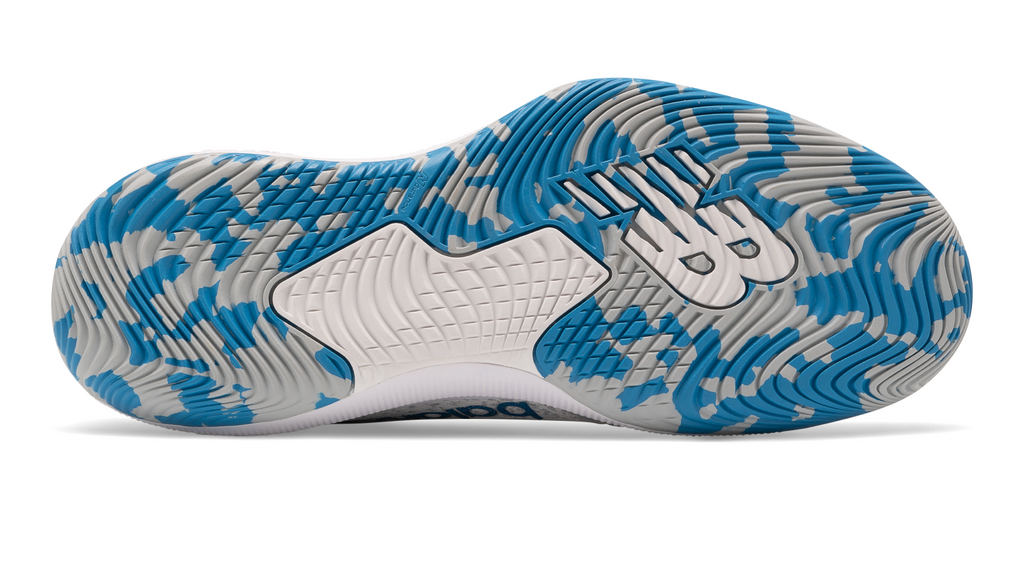Scratching the surface
All the differences and similarities between indoor and outdoor court shoes can soon seem daunting. You need the right footwear for you, for your sport, for the range of courts, then there’s the growth of newer sports (hello Pickleball). How can you even scratch the surface, without scratching the surface?
Keeping it simple(rr)
To simplify matters, at Rackets & Runners we typically associate soft soled-indoor court shoes with sports played on hardwood-type surfaces, like pickleball, squash, volleyball, badminton, handball, padel and table tennis; while outdoor court shoes are specifically designed for sports played on more rugged surfaces like tennis and pickleball.
Indoor shoes are made of organic gum rubber, a softer, stickier material that heats under friction to provide excellent grip on hardwood floors; while outdoor shoes are made of a high abrasion synthetic rubber that is ideal for aggressive and efficient movement in all directions. The softer outsole on indoor court shoes also provides a little more of a ‘soft touch’ on hardwood floors, so your joints won't cry out for relief; while outdoor court shoes are great for protection in the modern game, including sliding and dragging.
Choosing one for both
Some brands are calling outdoor court shoes “all court shoes.”
I am a regular on the squash court, yet during last summer I became part of the pickleball revolution, and now share my time evenly between the two.
If you are in the same boat as me, or playing indoors to keep away from the winter cold, you could use either court shoe on either type of surface, but your most versatile type would be a 'hard' outdoor court shoe as they are ‘non-marking.' You'll sacrifice performance, and they might feel a little stiff on an indoor surface, but you won't suffer the durability loss of an indoor shoe on an abrasive court.
Some of our most versatile options for both in one include:
- New Balance 996v5 - a light, very comfortable ‘non marking’ court shoe that has a very low profile, grips to the court well, and is breathable for indoor courts.
- Nike Vapor Pro 2 - a lightweight shoe, which has a great lockdown, is great for sliding, and has a plush cushion for hardwood and hard outdoor court surfaces.
- Head Sprint Pro - a little firmer underfoot, but great lateral support, and notable breathability, for long hours out on court, all encased in lightweight low profile designed for speed.
Separating them out
Tread & Traction
Confidence is key on the court. Whether you are playing at a higher level, learning the game, or coming back from injury, having the correct grip is crucial to promote swift, stable movements. The tread must align itself to the court.
Outdoor court shoes often come with larger tread patterns. These are designed to provide good lateral stability as well as proper grip on all types of surfaces.

Comparatively, the soles of indoor shoes often have circular flat spots on them which provide an efficient suction-like grip on smooth, flat surfaces.

Cushioning the blow is key to longevity on the court. Outdoor court shoes must have a few extra features to improve comfort. By enhancing and strengthening the mold of the shoe they provide better support for lateral cuts, and insulation.
Indoor court shoes have thinner lateral walls to provide breathability to reduce sweating and heat, and ensures a little more flexibility for short, sharp and more jarring movements.
Outdoor options
The distinction between the two makes sense when comparing which sports are played on each surface. Tennis, generally played on outdoor hard courts, requires long runs up and down the court and from side to side. Stepping laterally and cutting after these long runs is more demanding on the body and, therefore, more demanding on the shoe.
Options here are:
- Asics Gel Resolution 9 - if support is a priority, we recommend this. Dubbed the ‘perfect shoe’ by our resident all court sport enthusiast Luca Berg, who reviews this shoe on our youtube channel, it is a great combination of plush comfort, structure, and breathability.
- New Balance Coco Gauff CG1 - an unconventional basketball silhouette that really encases your foot for all types of movement. New Balance really nailed the color schemes.
- New Balance CT Rally - our most cushioned shoe within our line up, it has great durability protection and versatile lateral support.
- K-Swiss Hypercourt Express - Supremely comfortable, very stable and fits a variety of foot types and is very orthotic friendly.
Indoor options
Indoor court sports, like squash, require quicker, more reactive movement, in tight spaces. Lighter, more flexible shoes compliment this style of play. You are not as hard on your shoes in these types of sport, so they sacrifice durability and stability in search of that quicker feel.
Some of our favorites indoor hardwood shoes include:
- Asics Gel Rocket – tried and true, a no frills, breathable and supportive shoe that will get you on the court.
- Babolat Shadow Tour - slips on like a glove and can help you turn on a dime when you're in awkward positions around the court.
Find What's Right For You
If you are on the hunt for a new pair of indoor court shoes, check out our selection of men’s & women’s. If outdoor court shoes sound right for you, you can also check out our men’s and women’s. These shoes come in a variety of styles.
If you’re not sure which shoe is right for you, pop into our Oak St store and let our fit experts help find you the perfect match.

